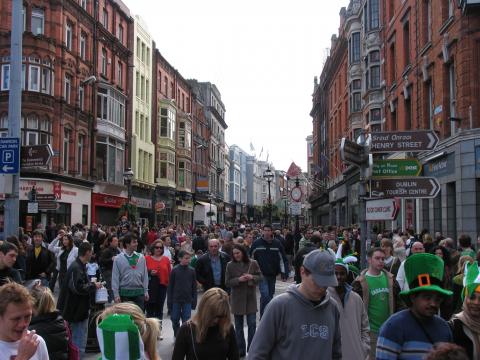Sharing the burden?

As we collectively brace ourselves for four years of austerity, it is worth remembering that Ireland is not a poor country. By Eoin Ó Broin.
Yes, we have high levels of unemployment and poverty. Yes, we have high levels of private and public debt. But the money that flowed into the country at the height of the boom has not all disappeared.
In June of this year Merrill Lynch, one of the world's biggest financial management companies and Capgemini, the global IT and business consultancy firm, published their 14th World Wealth Report.
The report, despite its title, does not deal with all wealth in the world. Rather it focuses only on the net wealth of the world's richest individuals.
Merrill Lynch and Capgemini are in the business of advising the world's wealthiest people how best to invest their money. So the report tracks investible or liquid wealth. This means cash that is ready to invest now and excludes collectibles, consumables, consumer durables and primary residences.
If you have liquid assets of more than $1million then you will find yourself in their High Net Worth Individual (HNWI) category. If you have liquid assets of $30million or more then you are categorised as an Ultra-High Net Worth Individual.
So what happened to the net wealth of the world's wealthiest people, including those in the south of Ireland, during 2009?
Last year World Gross Domestic Product fell by 2%. In Europe the fall was twice that at 4.2% while in the south of Ireland GDP fell by 8%.
So since the total amount of wealth in the global, regional, and domestic economies fell in 2009 then surely the number of HNWI's and Ultra-HNWI's and their total accumulated wealth has fallen too, right? Wrong!
According to the World Wealth Report the total number of HNWIs grew by 17% in 2009 to 10 million people, returning it to 2007 levels despite the global recession. This represented a 19% increase in the net wealth of this group to a whopping $39 trillion.
As for the Ultra-HNWIs, having lost 24% of their wealth in 2008 they saw it rebound by 22% in 2009 bringing it almost back to its pre-recession level.
At the end of 2009, Ultra-HNWIs accounted for 34% of global HNWI wealth, while representing only 0.9% of the global HNWI population.
In Europe the HNWI population rose by 13% to three million people with their personal net wealth up 14% to $9.5 trillion.
Meanwhile back in cash-strapped Ireland, an additional 1,800 people entered the HNWI category bringing the total up to 18,100 individuals, an increase of 11% on 2008.
In addition 18 people found their way into the Ultra-HNWI category, bringing the total number of individuals in the state with a net worth of over $30 million to 181.
Unfortunately, we do not have official figures on the total amount of net wealth held by these people. However according to the author of the World Wealth Report the south of Ireland is 'back at 2005 levels.'
Working from the Bank of Ireland 2006 study Wealth of the Nation, Cork Institute of Technology economist Tom O'Connor has estimated than in 2006 the net wealth of the states High Net Worth Individuals was in the region of €156 billion.
The same report calculated that total net wealth in the southern Irish economy rose by 19% in 2006. Taking O'Connor's estimate and reducing it by 19% it is reasonable to assume that the net wealth of the HNWI's at the end of 2005 was at least €1.4 billion.
So if the authors of the World Wealth Report are right then our 18,100 High Net Worth Individuals –including the 181 Ultra-HNWIs- could have a total net wealth of €140 billion.
O'Connor's own estimates, based on adjusting the 2006 figure in line with fluctuations in asset values are that these 18,100 people have a net wealth of €121 billion.
Either way it is a very large sum indeed, and a large sum that is available for investment or, if we had a Government that was willing to take such a course of action, subject to tax.
There is also little doubt, judging by global and regional trends, that the figure is up from 2008, making our HNWI's the only group in society who saw their wealth increase in 2009.
Sinn Féin and The Community Platform have both advocated a 1% tax on this wealth, which would provide the Government with more than €1 billion in extra revenue in 2011.
Rather than cut social welfare or drag low-income households into the tax net –options that will increase poverty and damage the economy- the Government has a clear and viable alternative.
Choosing that alternative would require a commitment to spreading the burden of the economic crisis fairly across society, a commitment that is clearly lacking in our present Government.
